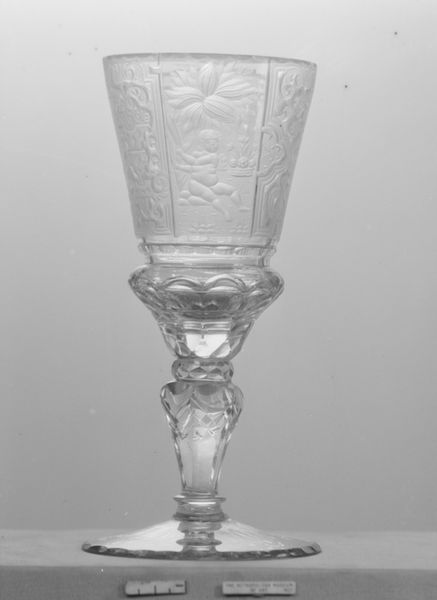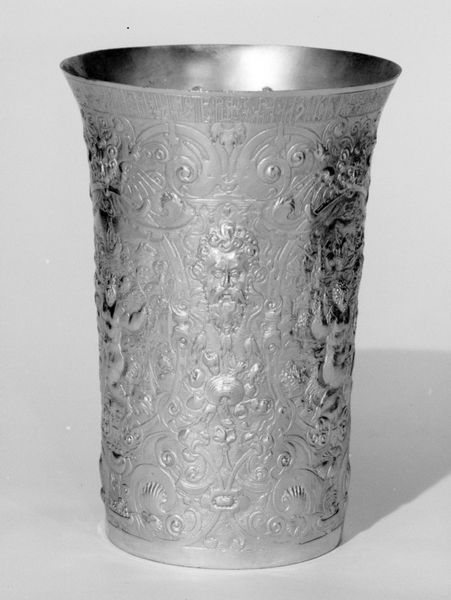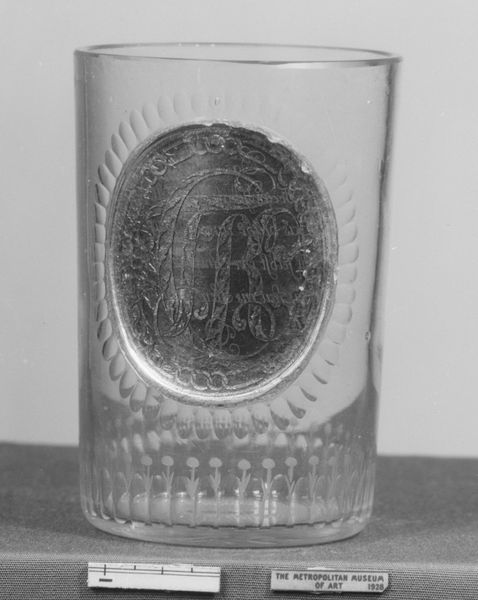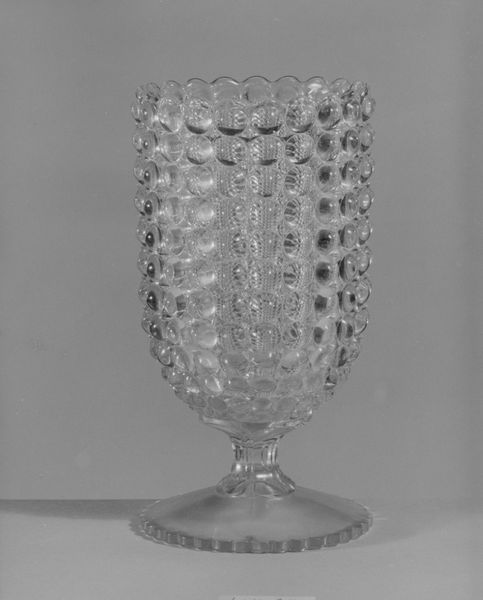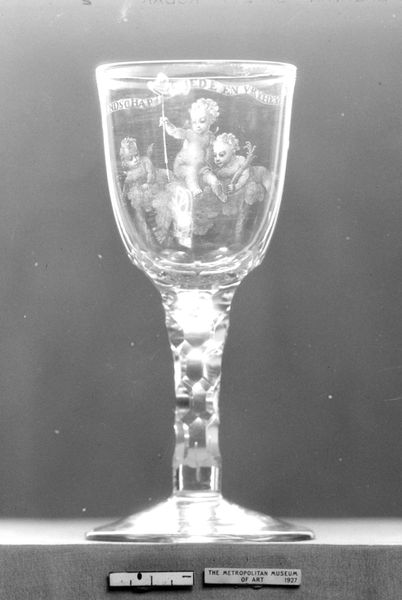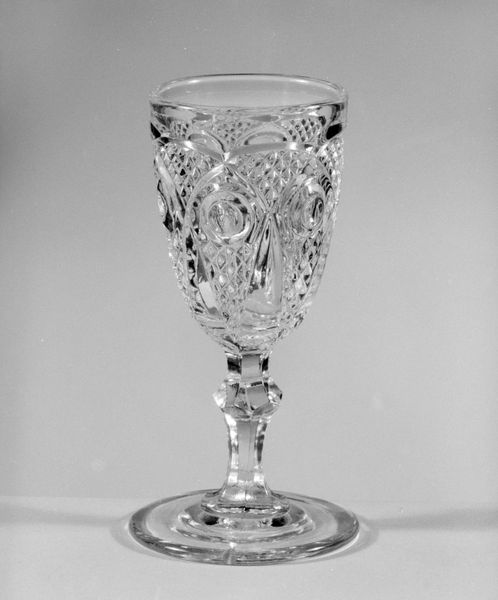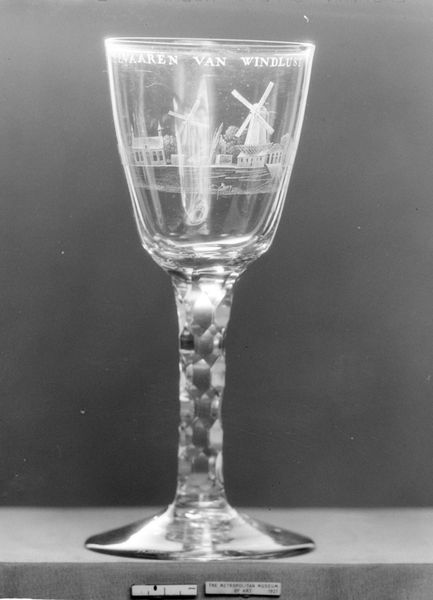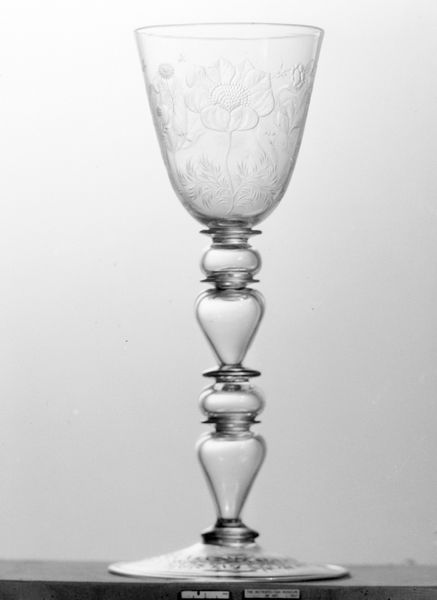
carving, glass, sculpture
#
carving
#
glass
#
sculpture
#
history-painting
#
decorative-art
Dimensions: Overall: 5 3/4 × 3 7/8 in. (14.6 × 9.8 cm)
Copyright: Public Domain
Curator: Let’s look at this “Beaker” made around 1825 to 1835 by Anton Simm, currently housed in the Metropolitan Museum of Art. It is glass, with carving and engraved images depicting various historical scenes. Editor: My immediate reaction is… wow, the intricacy. It's mesmerizing how detailed these tiny narratives are on such a smooth, clear surface. There's almost a fragility that belies the effort it must have taken to carve. Curator: Exactly. It embodies a particular historical fascination, where crafted objects became vessels of collective memory. The depicted scenes offer glimpses into a world steeped in political drama and social upheaval. Who are these figures represented? Whose stories are told, and just as important, whose stories are omitted? Editor: Agreed. And consider the glass itself. It isn't just a neutral backdrop; it's a carefully produced material, embedded with the labor of its makers. Where were these materials sourced, and who was doing the glass blowing and carving? How does the value of this “fine” artwork contrast with that of laborers working in glass production? Curator: That connects deeply to its cultural moment. Think of the decorative arts’ relationship to nation building. Glassware like this Beaker acted as a potent symbol of prosperity. Moreover, its presence in elite collections underscored those individuals' influence. Editor: The material also prompts questions of consumption. Was it intended for display, for actual use? Does function temper our interpretation, or do these intricate carvings push the work towards art for art's sake? Curator: It pushes us to think about the artwork as part of a broader visual language—engaging the power dynamics woven into social narratives that privileged certain views and concealed others. And even its aesthetic—is the artist merely decorative? Is the artwork revolutionary, radical or something in between? Editor: Absolutely. And focusing on those tensions between surface and substance helps reveal how such objects play active roles in shaping cultural values of its day—the labor, the commodity form, and how these factors both serve and potentially subvert its symbolic value. Curator: It prompts us to delve deeper and analyze whose visions dominated artistic expression and whose perspectives are drowned out. Editor: Indeed, taking time with pieces such as the “Beaker”, pushes us to reflect on art as both a carrier of cultural ideologies and reflection on human value.
Comments
No comments
Be the first to comment and join the conversation on the ultimate creative platform.
